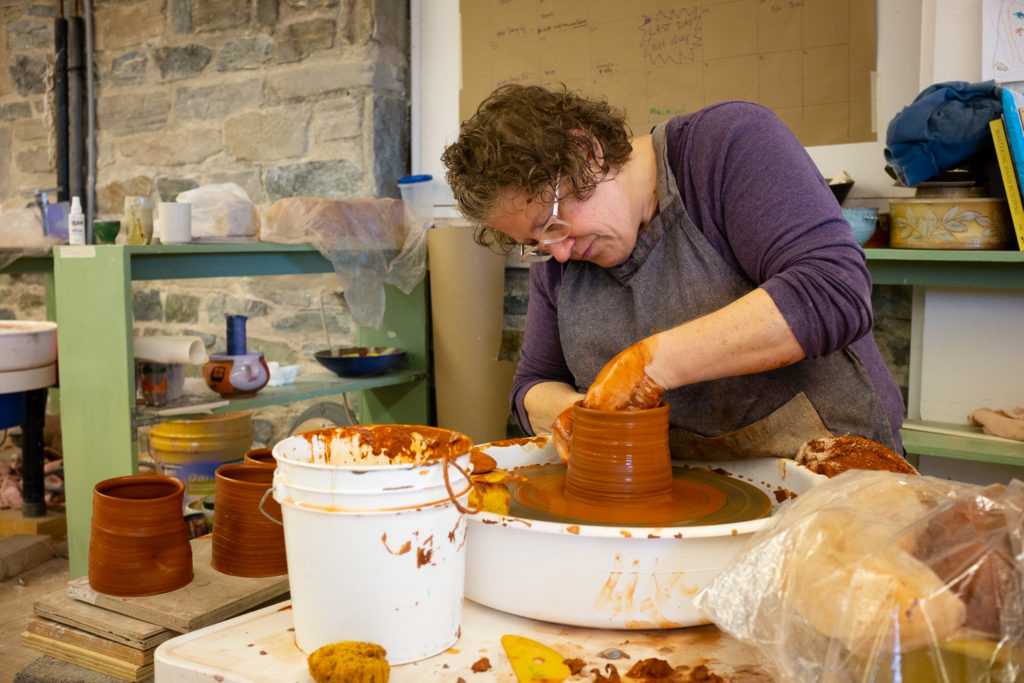
Instructor Sunshine Cobb throwing very large mugs out of very red clay (East Bay Red Cone 5, to be exact). Sunshine is teaching the spring Concentration in the upstairs clay studio.

Instructor Sunshine Cobb throwing very large mugs out of very red clay (East Bay Red Cone 5, to be exact). Sunshine is teaching the spring Concentration in the upstairs clay studio.
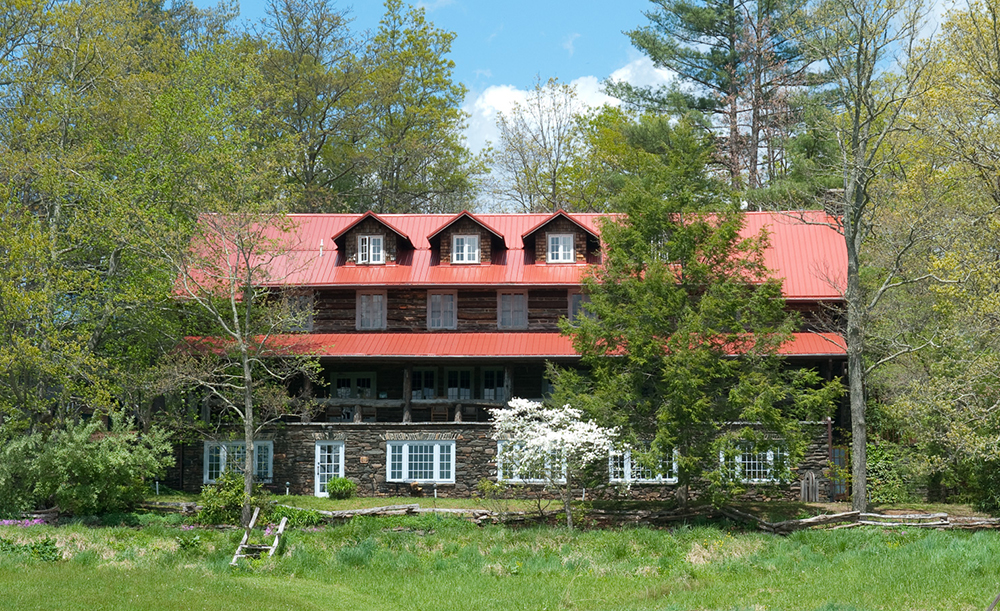
Penland’s Edward F. Worst Craft House is one of the most iconic buildings on campus. Its red roof and rustic log siding are the unofficial welcome sign to visitors as they round the curve in the road and the expanse of the knoll opens up before them. It’s also one of the most beloved buildings, as anyone who has spent a lazy afternoon on the rocking chairs sketching, thinking, or chatting could tell you. In the eight decades the Craft House has been a part of Penland, it has housed everything from students and studios to offices and the campus supply store and has served as a gathering place for our community to perform music, dance, tell stories, and simply relax.
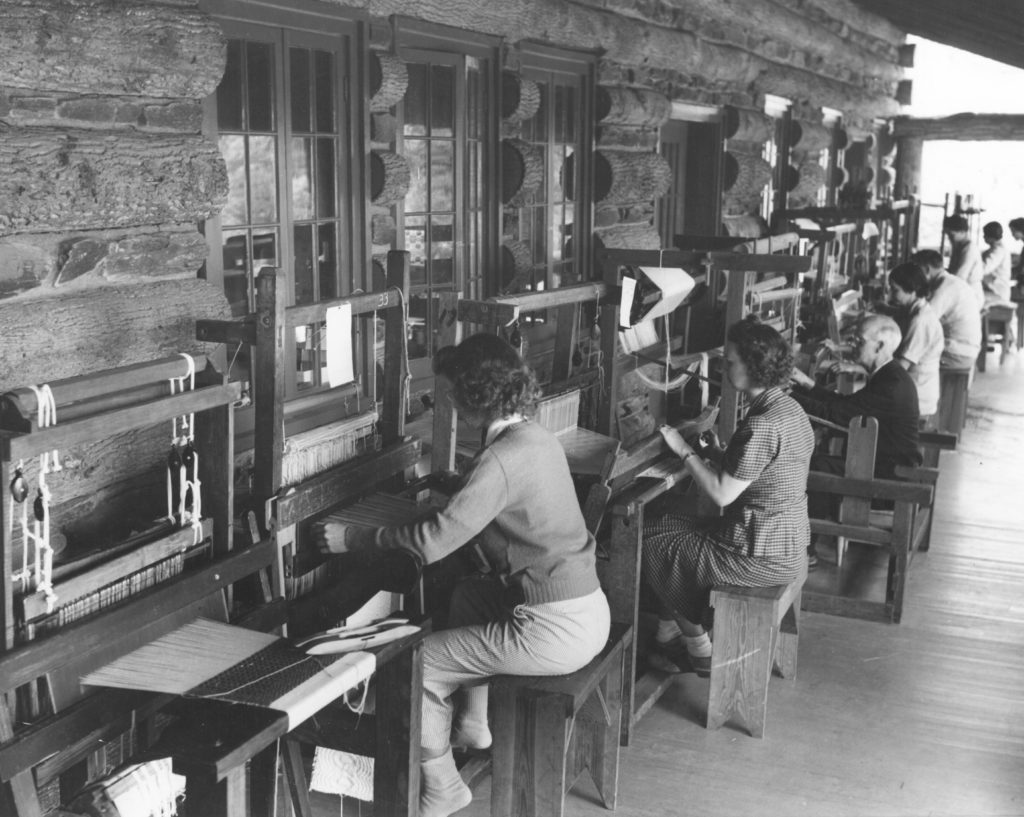
A little history: the Craft House was built to house Penland’s weaving studio, and its construction was a true community event. Penland students, instructors, staff, and friends helped to raise funds for the structure by contributing $2.50 to purchase a log or a window sash. The two-day log raising took place in May 1935, and the windows, doors, fireplaces, chimneys, and other touches to finish the building were added over the next few years. The Craft House was named in honor of Edward F. Worst, an early and influential weaving instructor at Penland, and it was home to Penland’s weaving program until 1949. In December of 2003, the Penland School Historic District was added to the National Register of Historic Places, in large part because of the Craft House and the history it holds.
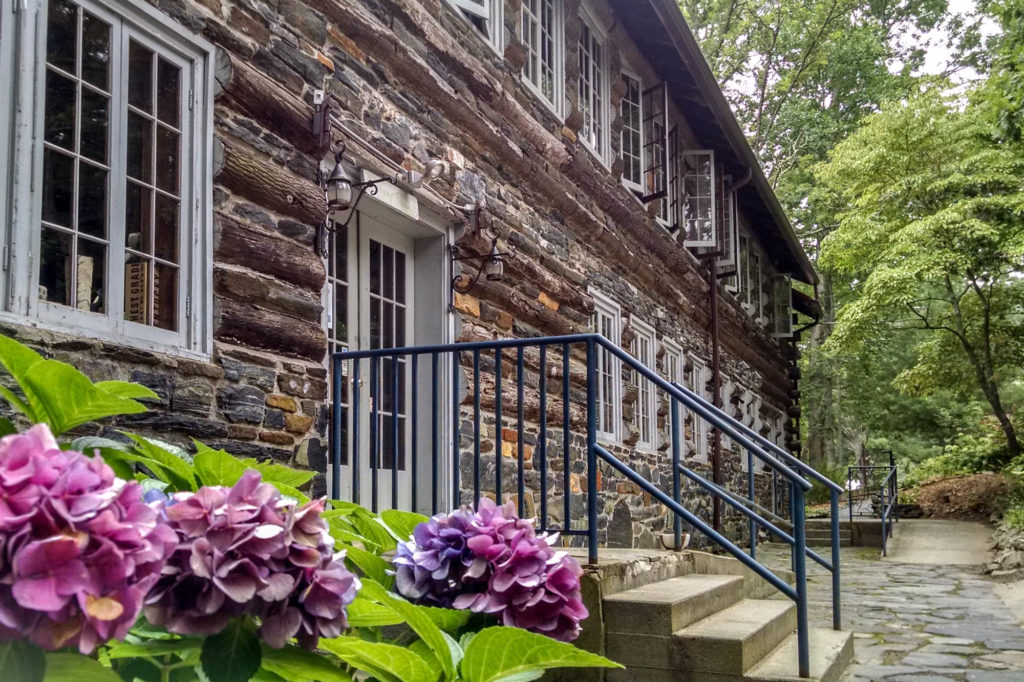
Unfortunately, the old saying “all you need is love” doesn’t quite hold true, at least not for large log structures. Over time, many of the soft poplar logs that clad the Craft House have deteriorated, and Penland is now embarking on a complex project to restore this beloved building. Together with a team that specializes in historic preservation, we have developed a restoration plan that will address repair and replacement needs while maintaining the Craft House’s special character.
The most visible part of this restoration project is the logs themselves. In fact, anyone who has been to campus this spring will have noticed the impressive stack of long, straight trunks in the parking lot adjacent to the Craft House. These trees have been cut locally from Penland’s 420-acre campus and will be used to replace sections of the original logs that show significant cracking or decay—roughly 16% of the building’s total logs. This aspect of the project will also include repairs to the chinking and daubing and additional reinforcements to anchor the log siding to the Craft House’s internal structure.
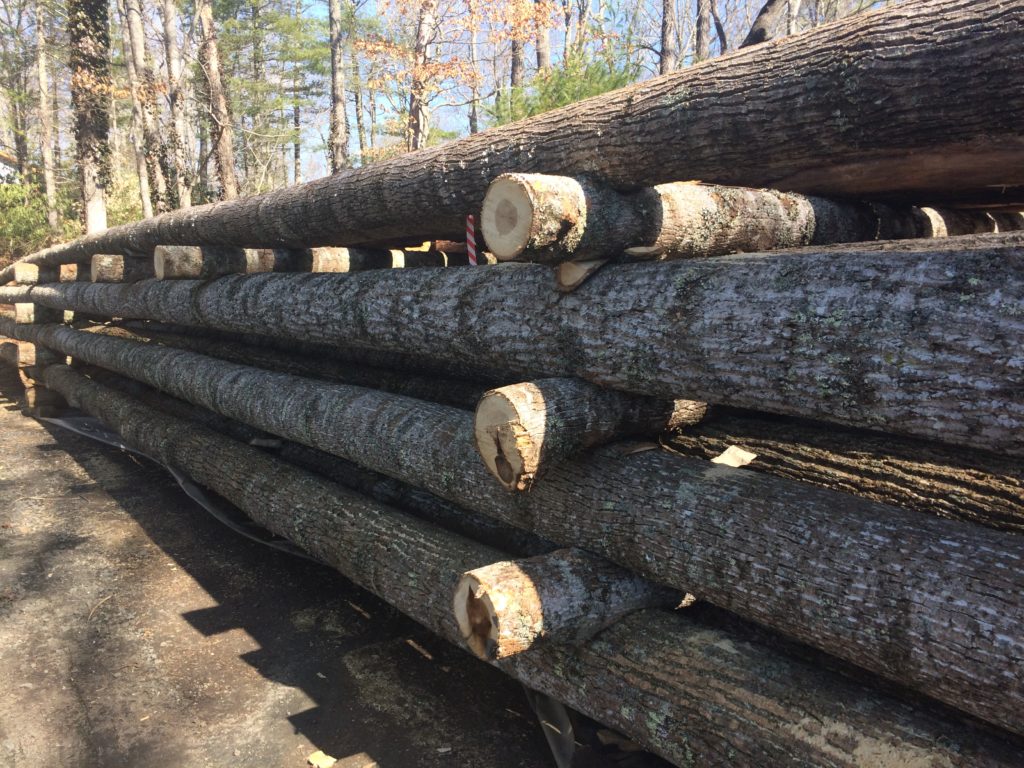
The Craft House’s windows, doors, porch, and roof will also receive attention as part of the project. This includes restoring the original paint scheme, bringing the porch railing up to current building codes, replacing siding shingles and sections of roof that have deteriorated, repairing the original stonework on the building’s steps, and fixing or replacing the sixty-nine windows on the upper floors. And for any student who has stayed in the Craft House and battled with summer insects at night, you’ll be glad to know that each window will also be outfitted with a screen!
All this work will be happening in the coming weeks now that more spring-like weather has arrived. We are delighted to be able to give the Craft House the care and attention that it needs to continue to serve as an important touchstone for our community, and we are grateful to the many generous supporters who have helped to make it happen. We can’t wait to share this process—and especially the final outcome—with all of you. Stay tuned as those logs in the parking lot get woven into the fabric of the building we know and love!
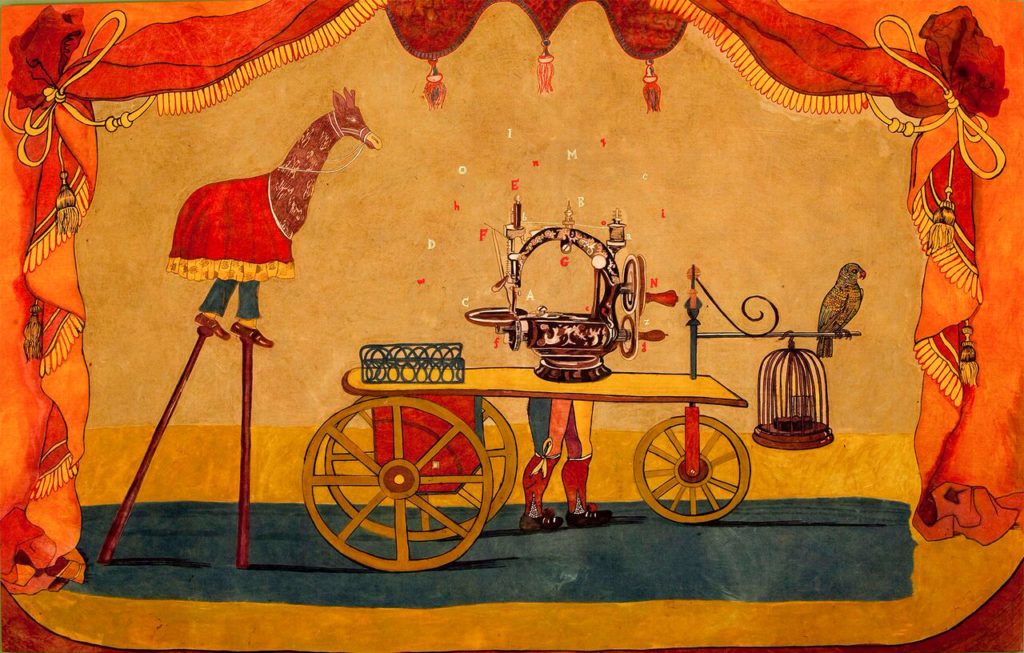
Some things just never get old, like the power of a good story or the draw of color and pattern. This helps to explain the enduring appeal of kalamkari, an intricate process of decorating and dying cloth that has been practiced in India and Iran for over 2,000 years.
This summer, we are thrilled to bring kalamkari to the Penland studios in a session 1 textiles workshop taught by Indian artist Lavanya Mani. What’s most exciting, perhaps, is the wide-ranging appeal of a process that seems quite specific at the outset. For weavers and natural dyers, there will be deep exploration of mordants, tannins, and natural dyes like madder and indigo and new insights into how to layer and combine them to create a vivid and expansive palette. For painters and storytellers, there will be the opportunity to use cloth as canvas and bring narrative to life through brush, block, and color. And for process nerds and material enthusiasts, there will certainly be new techniques to master and refine as Lavanya reveals the important sequence of steps used to build up a kalamkari cloth.
If kalamkari doesn’t sound familiar, then perhaps chintz does. The refined floral prints of chintz fabric that rose to such popularity in Europe in the 17th and 18th centuries started as kalamkari imported from India. But the process itself can be used to achieve a much wider array of results. Take Lavanya’s own work as an example: her pieces are much closer to paintings, saturated with color and thoughtful details rendered in an expressive hand. Many draw on themes from literature or Indian history to build insightful narratives that speak to power dynamics, the experience of womanhood, and more.
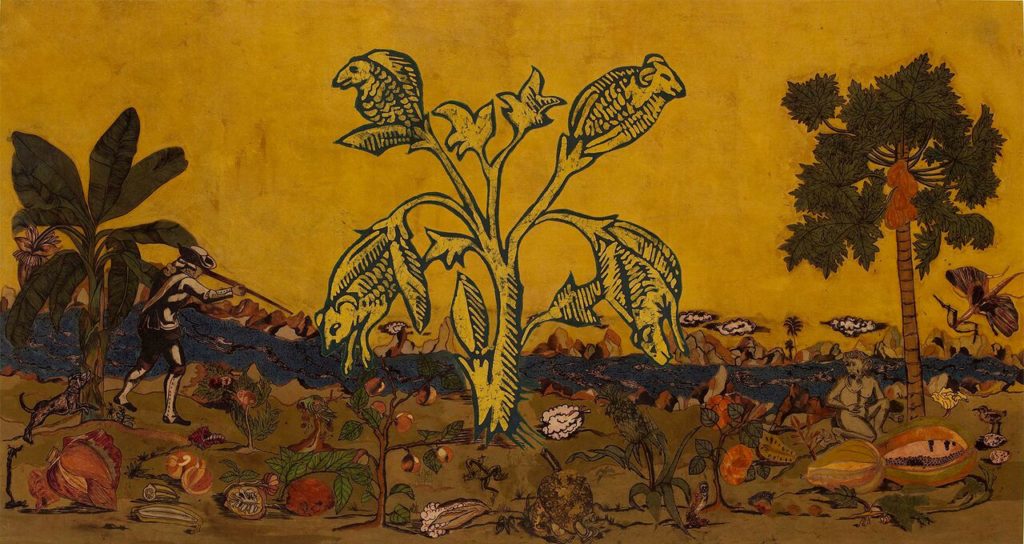
In her piece “The Emperor’s New Machine,” Lavanya sets up a Vaudeville-esque theater of saturated curtains and trimmings and places the sewing machine at center stage. The work includes entertaining circus-like details, but it also speaks to India’s independence movement and the role the sewing machine played in enabling India’s people to produce their own garments without relying on British imports. Another piece, “Signs Taken for Wonders,” mixes colonial and Indian imagery amid the lush flora and fauna of the Indian landscape.
For artists who would like to tell their own stories in color and pattern on cloth, we invite you to join Lavanya in the studios May 27-June 8 for two weeks of intensive kalamkari exploration. Students can expect to make samples, create an extensive dye card, and produce kalamkari pieces of their own. They will leave with a complete toolbox of steps and techniques to continue their kalamkari practice at home.
See below for the complete course description for Lavanya’s Kalamkari workshop. Other open workshops during session 1 include:
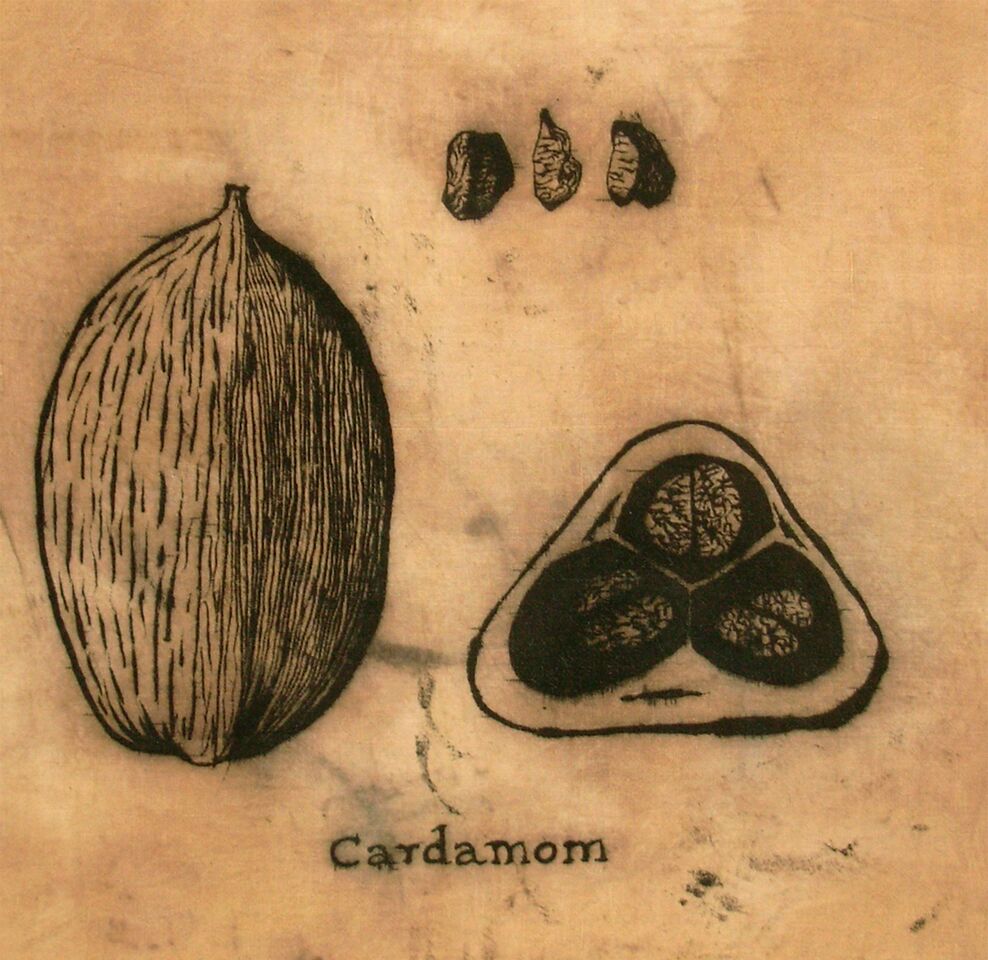
Lavanya Mani, May 27-June 8
This workshop will explore kalamkari, a traditional Indian drawing, printing, and dyeing process once known famously as chintz. Through lecture-demonstrations and hands-on application, students will learn how kalamkari was made historically, how it is practiced today in various parts of India, and how it can be adapted for the contemporary studio. We’ll create strong, vivid colors using classic dye. We’ll cover fabric selection and the procedures and techniques for preparing fabric so it is receptive to the dye, including scouring, and pre-treatment with tannins and mordants. All levels. Code 01TA
Studio artist; exhibitions: solo at Chemould Prescott Road (Mumbai), Victoria and Albert Museum (London), Kochi-Muziris Biennale (India), Galerie Pagoda (Paris), Pearl Lam Gallery (Shanghai).